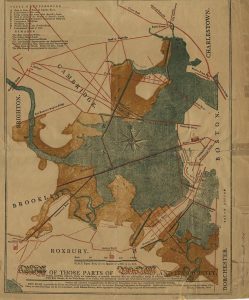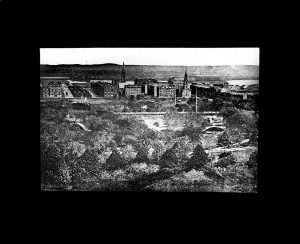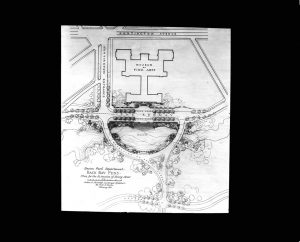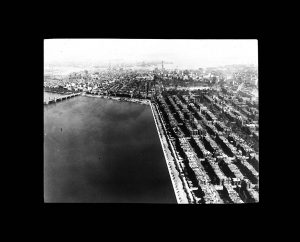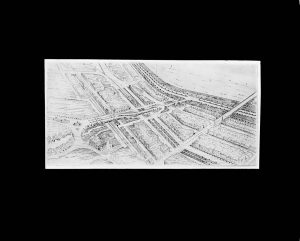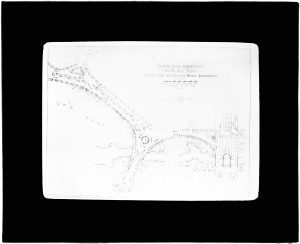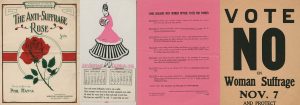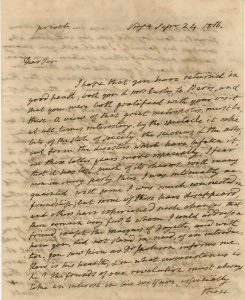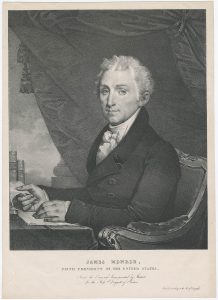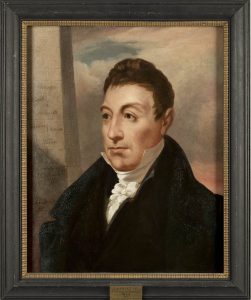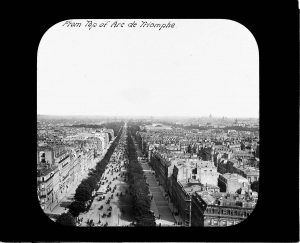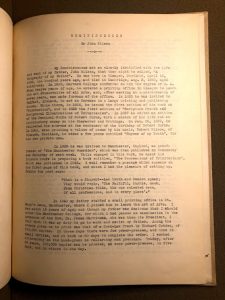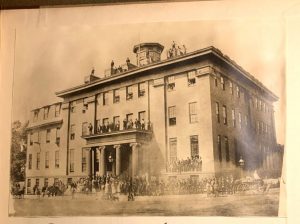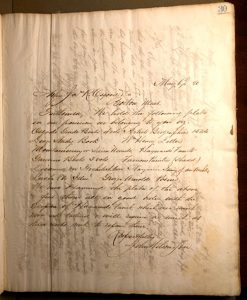By Rakashi Chand, Senior Library Assistant
People throughout America have been forced to place a much greater emphasis on health and well-being due to the COVID-19 pandemic. One public health measure we have been encouraged to follow is to refrain from travel and take “staycations” in order to avoid spreading contagion. However, in 19th-century New England, if you lived through a pandemic or were diagnosed with some other illness—and had the wealth to afford temporary relocation—you might have been encouraged to travel and take what we might, perhaps, call a “healthcation”.
In the 19th century, medical travel or medicinal vacations were very popular. So perhaps this is a great time to explore—from the safety of your own home, of course—a few of the historic health hotels and spas that offered answers to various ailments. Let’s take a look at several leaflets and manuscripts found at the MHS … and who knows, perhaps healthcations will begin trending once again!
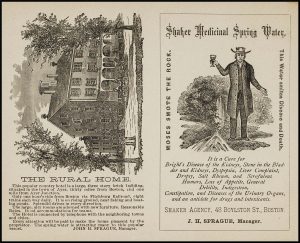
Cure your kidney Stone!
Shaker Hotel
According to this leaflet, the Shaker Hotel offers Shaker Medicinal Spring Water and a quick train commute from Boston to help with many of your ailments. It goes on to state that Shaker Medicinal Spring Water will cure everything from Kidney disease and loss of appetite to constipation and drug addiction. The ‘Rural’ Home offered “large airy rooms with new furniture. Reasonable rates. Good accommodations for teams.” Imagine, team outings in 1880! The leaflet lists gleaming reviews and success stories. “Moses smote the Rock. This water smites Disease and Death.” It’s a pretty good advertising campaign, wouldn’t you say?
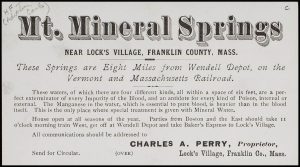
Mount Mineral Springs Health Spa in Franklin County, MA
“These waters are Performing the most wonderful cures…” !
The Mount Mineral Springs Health Spa claimed to have four different types of healing waters, that would work on ailment from ulcers to liver complaint to ‘female weakness’ to constipation, diarrhea and diabetes. “These waters, of which there are four different kinds, all within a space of six feet, are a perfect exterminator of every Impurity of the Blood, and an antidote for every kind of poison, internal and external.” Just a hop, skip, and jump, or three train rides away! They had take-out service as well “Order for Water promptly filled and delivered at Lock’s Village; but all orders should be accompanied with statement of disease.” After all, this was for serious health issues. It goes on to offer “Good Stable Accommodations. Accommodation for Picnics in the Grove. Dinner parties of twenty or less promptly served.”
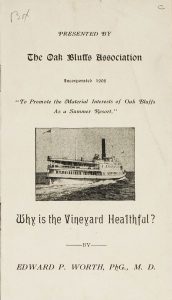
Martha’s Vineyard, MA
This brochure was written by Dr. Edward P. Worth “To promote the material interests of Oak Bluffs as a summer resort” for the Oak Bluffs Association. “Why is the Vineyard ‘Healthy?’ I am often asked”, begins the physician in explaining the health benefits provided by a summer trip to the Vineyard. He goes on to say “The non-resident comes to the Vineyard to regain or conserve the health of himself or family. ‘To live a favorable life the climate must be as such, in connection with diet, rest exercise and recreation, shall promote the highest physiological efficiency of the human machine,’ and the Vineyard offers these unsurpassed.” He continues, “Rest, reading and recreation are the three R’s for the simple life on the Vineyard. The way or manner of resting is largely a choice… But Oak Bluffs offers amusement of every variety for every age… Sea bathing, a most cheerful exercise, and tonic in effect, is rendered very agreeable by the warmth of the water, averaging 72 degrees at Oak Bluffs during July and August.”
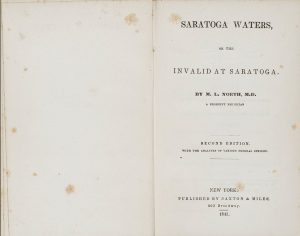
The place to be seen! Perhaps the most famous example was Saratoga Springs in New York, where many Bostonians traveled for health. Though their observations upon arrival were more aligned to a summer resort than a medical facility. Perhaps this is the reason why Dr. M. L. North wrote in the Introduction to Saratoga Waters, or, The Invalid at Saratoga, [NY: Saxton & Miles, 1843]:
“To the Invalid, whom infirmities have depressed, whom pains have harassed, and whose hopes of regaining health have hitherto proved delusive, the inquiry –“Shall I visit Saratoga?” is one of no ordinary moment. Home must be abandoned-toil and exposure encountered- the supervision of domestic concerns and of business suspended- expense incurred-strange faces and scenes met-new lodgings, new accommodations, new reciprocities established… The healthy, the fashionable and the pleasure-seeking cannot appreciate at all the sacrifices and painful efforts that are often made by those whom they meet at the Springs.”
In a travel Journal, Jeremiah Fitch of Boston described his pilgrimage to the Saratoga Springs in great detail, including the lodging and halls (rough transcription):
July 28, 1820
“…this Hall is 200 feet in length by about 30 in width, 3 stories high, 3 halls comprise the whole lower floor, one is for breakfast, dinner & supper, the middle hall is for the gentlemen and ladies to walk & sit in, being elegantly furnish’d. the eastern hall is for balls, & other amusements, in front of the building is a piazza the whole length and height, 18 feet wide & another back of the building as high, but not quite as wide. The former is for gentlemen & ladies to walk in, in the evening The latter is for gents to lounge & smoke & tell stories in— This place is a delightful village…
… drank freely of the waters, which operated powerfully on Mrs. F and Caroline, not quite so much on George or myself,—
(July 29 1820) “spent this day very agreeably in company with about 50 Bostonians.”
For your sake and mine, I hope we will travel again someday soon, and when we do, I hope it will not be for our health. But until then, bottoms up on that spring water!



